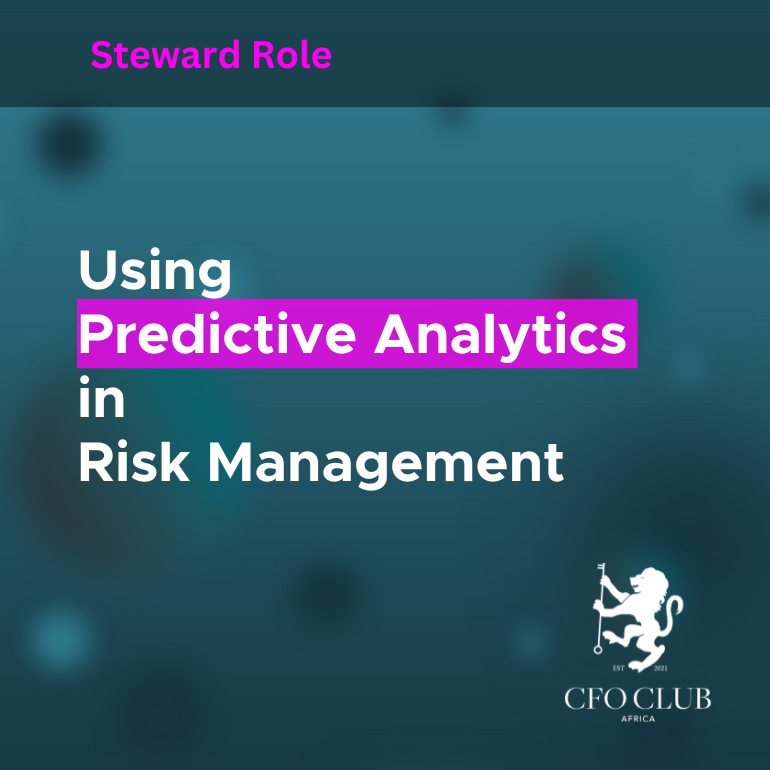Using Predictive Analytics in Risk Management
In today’s fast-paced business environment, managing risks effectively is more critical than ever. CFOs are tasked with not only safeguarding the financial health of their organisations but also navigating uncertainties that could impact business performance. One powerful tool that is transforming how businesses approach risk management is predictive analytics. This article explores how CFOs can use predictive analytics in risk management and provides actionable steps to implement it in your business.
What Is Predictive Analytics?
Simply put, predictive analytics involves using historical data, statistics, and machine learning techniques to predict future outcomes. In risk management, this means identifying potential risks before they occur, helping CFOs make informed decisions to mitigate these risks.
Why Predictive Analytics Matters in Risk Management
Traditionally, risk management has relied on reactive strategies—identifying and addressing risks after they have already impacted the business. Predictive analytics changes this by allowing CFOs to foresee potential problems and take proactive steps to prevent or minimise them. Here’s why it’s so valuable:
- Proactive Risk Identification: Predictive analytics helps identify emerging risks before they escalate, giving businesses more time to respond.
- Improved Decision-Making: With data-driven insights, CFOs can make more informed decisions about risk, focusing resources on the areas that need the most attention.
- Cost Savings: By identifying risks early, companies can avoid costly disruptions, fines, or reputational damage.
Practical Applications of Predictive Analytics in Risk Management
To get started with predictive analytics, you don’t need to be a data scientist. Here are some practical ways CFOs can use predictive analytics in risk management:
1. Financial Risk Forecasting
Predictive models can analyse your company’s financial data—such as revenue patterns, cash flow, and expenses—to identify potential financial risks. For instance, these models can predict when cash flow might become tight, helping you take steps like adjusting payment terms or securing additional financing before problems arise.
Start by leveraging data from your accounting systems and working with your finance team to create simple forecasting models. Tools like Excel can be used initially, but more sophisticated software can provide deeper insights as you progress.
2. Fraud Detection
Fraud is a significant risk for businesses of all sizes, but predictive analytics can help by detecting unusual patterns in transactions or behaviors. Machine learning algorithms can flag anomalies that may indicate fraudulent activity, such as unexpected spikes in expenses or irregularities in vendor payments.
Implement analytics tools that monitor your financial transactions in real-time and alert you to any outliers. Regularly review these reports with your internal audit or risk teams.
3. Supply Chain Risk Management
In industries where supply chains are critical, disruptions can lead to costly delays. Predictive analytics can assess supplier performance, delivery times, and external factors like geopolitical events or natural disasters to predict potential disruptions in your supply chain.
Collaborate with your procurement and operations teams to gather data on suppliers, lead times, and market conditions. Use this data to develop predictive models that highlight potential risks in the supply chain before they happen.
4. Regulatory Compliance
Regulatory risks—like changes in tax laws, financial reporting standards, or environmental regulations—can create significant headaches for CFOs. Predictive analytics tools can analyse legal and regulatory data to foresee changes that may affect your business.
Stay updated on regulatory trends by using analytics platforms that track changes in compliance requirements. This can help your business prepare for upcoming regulatory changes and avoid costly non-compliance penalties.
5. Customer Credit Risk
Predictive analytics can also be applied to assess the creditworthiness of customers. By analysing customer payment histories, industry trends, and economic data, CFOs can predict which customers are likely to default on payments, allowing you to adjust credit terms or payment schedules accordingly.
Develop a scoring system that uses predictive analytics to assess the risk of extending credit to customers. Incorporate data like payment history, customer industry health, and broader economic indicators.
Implementing Predictive Analytics in Your Business
Now that we’ve explored the practical applications of predictive analytics in risk management, let’s look at how you can start implementing it in your business:
Step 1: Collect and Clean Your Data
Predictive analytics relies on high-quality data. Start by identifying the key data points that impact your business risks, such as financial transactions, customer behavior, and supply chain performance. Ensure that your data is clean, accurate, and up to date.
Step 2: Choose the Right Tools
You don’t need a massive IT infrastructure to get started with predictive analytics. There are many affordable and user-friendly tools on the market, from basic tools like Microsoft Power BI to more advanced platforms like SAS and Tableau. Work with your IT team to find the right solution that fits your company’s needs and budget.
Step 3: Collaborate Across Departments
Predictive analytics is most effective when multiple departments collaborate. Work with your finance, operations, IT, and risk management teams to ensure that all relevant data is being considered in your predictive models.
Step 4: Start Small and Scale
Don’t try to tackle everything at once. Start by applying predictive analytics to one area of risk—like financial forecasting or fraud detection. Once you see the value, you can expand the approach to other areas.
Step 5: Monitor and Adjust
Predictive analytics is not a one-time project. Continuously monitor the results of your predictions and refine your models as needed. The more data you collect over time, the more accurate and effective your predictions will become.
Conclusion
Predictive analytics is a powerful tool that can transform risk management for CFOs. By taking a proactive approach, you can identify risks before they become problems, make more informed decisions, and ultimately safeguard the financial health of your organisation. Start small, choose the right tools, and collaborate with your teams to unlock the full potential of predictive analytics in your business. By applying these principles, you’ll not only reduce risks but also increase your organisation’s ability to adapt to an ever-changing business landscape.

